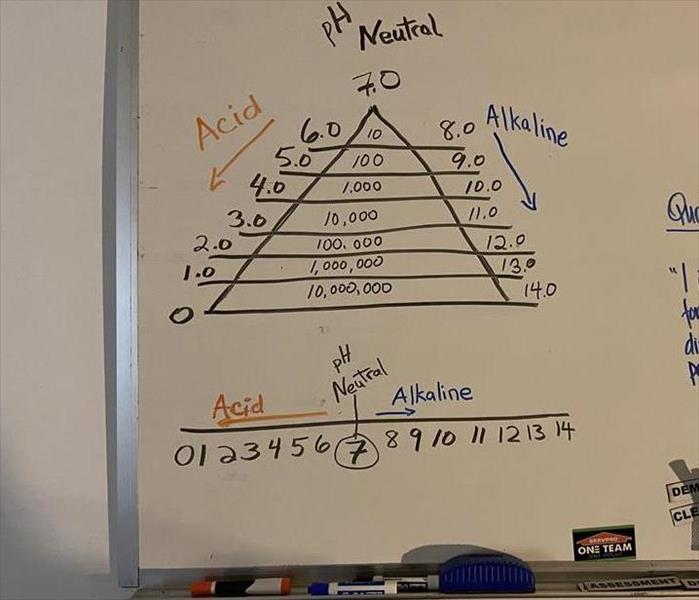Fire Restoration Cleaning Basics
9/17/2020 (Permalink)
Wash. Rinse. Dry. Repeat. This is how we clean things, right? Scrub a little, let it soak, then use some ‘elbow grease’.
Fire damage presents a great variety of cleaning challenges. Smoke and soot residues from a fire can wreak havoc on all the contents, whether the contents are made of wood, ceramic, metal, paper, or natural fibers. Fire residues can literally be baked on a surface.
Different types of soot residues can exist in the same environment, making it tricky to determine the best way to clean items. In addition, the type of surface also determines the best cleaning method and products to use, in order to remove the residue. Combining the principles and elements of cleaning requires a great deal of science.
For Example:
- On what kind of surface is the residue? Soot and smoke residues are acidic and can be very corrosive, not to mention carcinogenic.
- Is the soil water-soluble? Oil-residue requires an oil-based solvent.
- Will the surface be damaged by water or a solvent?
- For an oily soot, would you wipe it? If you do, it will smear, making it worse to clean.
Chemical actions involved in determining the best way to remove a soil:
- The pH of a residue and cleaning solution: The goal of water-based products is to return a material to a neutral pH; Most soils are slightly acidic, so test the residue pH
- Like dissolves Like: solvents for oil-based soils; water-based solution for water-based residue.
- Emulsions bridge oil-based soils with water
- Bleaching: chemical reactions from either adding or removing oxygen from the soil structure, that breaks the bond between residues and surfaces
- Enzymes digest protein soils
This is just some of the science behind identifying types of soot residues and types of surfaces from fire damage help to determine the best way to remove a soil.






 24/7 Emergency Service
24/7 Emergency Service
